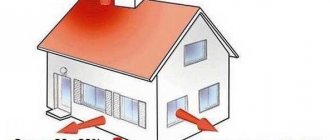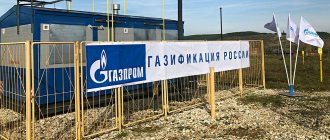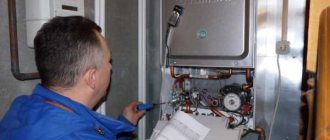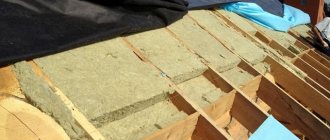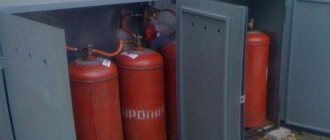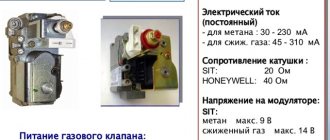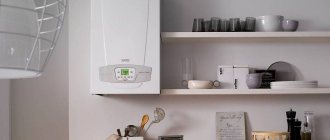Boiler KSts-GV-31.5. KSts-G-20N with burner AGU-T-M-35ts(28)(23)ts
1. Firebox 2. Smoke pipe 3. Coil 4. Water jacket 5. Turbulizer 6. Chimney 7. Damper 8. Insulation 9. Bottom pipe 10. Top pipe 11. Casing 12. Cover 13. Guard 14. Burner 15. Temperature sensor 16.Thermometer
5.2.5 Boilers KS-T-…; KS-TG-…; KS-TGV-... (Fig. 4,5,6) consist of a furnace 16(14), equipped for burning solid fuel and gas and a convective flue 17(15). In the lower part of the firebox, grates 13 and a beam are installed, forming the grate web. To ensure complete washing of the heating surface with flue gases and improve the operation of the boiler, the rear wall of the upper part of the firebox is made in the form of a cooled canopy. On the front surface of the boiler, loading doors 1 and screwing doors 2 are attached, through which fuel is loaded, the grate is cleaned, as well as the surface of the firebox and convective chimney are cleaned.
Boiler KS-TVm-16
1.Loading door 2.Loading door 3.Primary air damper 4.Pipe for connection to the smoke channel 5.Draft control damper 6.Casing 7.Pipe for connection to the supply pipeline of the heating system 8.Turbulizer 9.Thermometer 10.Insulation 11 .Water jacket 12. Shield 13. Grate 14. Water heater 15. Coil 16. Boiler furnace 17. Convective gas outlet area 18. Pipe for connection to the return pipeline of the heating system
Boiler KS-T-16
1.Loading door 2.Loading door 3.Primary air damper 4.Pipe for connection to the smoke channel 5.Draft control damper 6.Casing 7.Pipe for connection to the supply pipeline of the heating system 8.Turbulizer 9.Thermometer 10.Insulation 11 .Water jacket 12. Shield 13. Grate 14. Boiler furnace 15. Convective gas exit zone 16. Pipe for connection to the return pipeline of the heating system
Boiler KS-TV-31.5; KS-TGV-31.5N; KS=TGV-31.5/40N
1.Loading door 2.Loading door 3.Primary air damper 4.Pipe for connection to the smoke channel 5.Draft control damper 6.Casing 7.Pipe for connection to the supply pipeline of the heating system 8.Turbulizer 9.Thermometer 10.Insulation 11 .Water jacket 12. Shield 13. Grate 14. Water heater 15. Coil 16. Boiler furnace 17. Convective gas exit zone 18. Pipe for connection to the return pipeline of the heating system 19. Hatch for soot cleaning
To provide hot water, the boiler has a coil 3 (Fig. 1, 2, 3), which is located in a hot water environment. When water from the plumbing system passes through it, the water in the coil heats up. Adjustment of the required water temperature is achieved with a mixer. In the absence of a mixer, adjusting the water temperature is achieved by increasing or decreasing the speed of water passing through the coil using a valve. 5.2.5.1 Construction of a natural gas boiler In a boiler for burning natural gas, instead of grates, a scramble door and a cast iron frame, a gas burner device with automation is mounted. On all boilers operating on natural gas, a combustion plate is installed in the upper part of the firebox close to the front wall. 5.2.5.2 The procedure and principle of operation of the gas burner device is described in the attached operating manual for the gas burner device.
6. INSTALLATION OF BOILER AND HEATING SYSTEM
ATTENTION! Installation of a heating boiler should only be carried out by gas service specialists with a mark in the passport!
6.1 The gas burner device is stored in a separate package. To avoid damage, boilers must be transported in containers directly to the installation site. 6.2 When installing on combustible building structures, 0.5 m below the boiler and in front of its front, it is necessary to install a steel sheet gasket over asbestos cardboard or felt soaked in clay mortar. 6.3 In order to improve the conditions of water circulation in the heating system, the boiler must be installed in such a way that its lower pipe (see Fig. 1,3, item 9) is lower than the radiators of the heating system of the building (structure).
6.4 Pipelines are made from water pipes. Pipe connections can be made by threading and welding. 6.5 When installing pipelines by welding, threaded connections should be left to ensure disassembly of the system during repairs. 6.6 Recommended installation dimensions for radiators when installing residential heating: a) from the wall to the radiator no less than 3 cm; b) from the floor to the bottom of the radiator – 10 cm; c) from the top of the radiator to the window sill - at least 10 cm. d) When installing the radiator in a niche, the distance from the radiator to the side wall of the niche is at least 10 cm on each side. 6.7 When bending pipes, the radius must be at least 2 outer diameters of the pipe. 6.8 When laying pipes, risers must be installed plumb. The permissible deviation should not exceed 3 mm over 3 meters of pipe length. 6.9 Horizontal pipelines must be laid with a slope to allow air to escape from the system. The slope must be at least 10 mm per 1 linear line. meter of pipeline. In this case, the slopes of the branches to the heating device must be at least 10 mm over the entire length of the line towards the heating device. 6.10 If there are more than one boilers in the system, a plug valve or valve is installed on the return line to each boiler. 6.11 The boiler installation diagram is shown in the figures.
Installation diagram of the KS-G boiler. -12.. Connection of the boiler with a brick chimney and cleaning device
Installation diagram of the KSts-G boiler. -.. Connection of the boiler with a brick chimney and cleaning device
Installation diagram of the KS-T boiler. -16.. Connection of the boiler with a brick chimney and cleaning device
Installation diagram of the KS-T boiler. -31.5..; KS-GV-50.. Connection of the boiler with a brick chimney and cleaning device
Installation diagram of the KSts-G boiler. -.. Connection of the boiler with an asbestos-cement pipe Du-200
Installation diagram of the KS-TV-31.5 boiler. -..; KS-GV-50N Connection of the boiler with an asbestos-cement pipe Du-200
6.12 The chimney structure must meet the following requirements: the chimney to which the boiler is connected must be located in the internal main wall of the building. Smoke exhaust pipes laid through unheated rooms must, if necessary, be covered with thermal insulation. It is allowed to connect heating boilers to chimneys made of asbestos-cement pipes. The chimney installation must be agreed upon with the fire authorities. To ensure fire safety and avoid gas contamination in the room, the chimney must be installed above the roof level in accordance with the requirements of SNIP 2.04.08-87. 6.13 The cross-sectional area of the chimney should not be less than the area of the boiler pipe connected to the chimney (see Table No. 1). 6.14 Chimneys must be vertical, without ledges. 6.15 The diameters of the heating system pipelines are selected using a special calculation. The most common diameters are: - main boiler riser - 1¾-2ıı - distribution and collection lines - 1¼ - 1½ıı - connections to devices - ¾ - 1ıı 6.16 Heating boilers can be installed in a closed heating system with a membrane-type expansion tank. 6.17 When connecting the boiler coil to the hot water supply system, connect the cold water to the lower pipe, and the hot water outlet to the upper pipe. The pressure in the heating system in operating condition, at a water temperature in the heating system of 60º-80ºС, should not exceed the operating water pressure indicated in the table. 1 point 4 of the manual, that is, 0.12 MPa (1.2 kgf/cm2) or 0.2 MPa (2.0 kgf/cm2) for KSts boilers…. A safety valve should be installed on the riser, adjusted to a pressure of 0.15 MPa (1.5 ± kgf/cm2) or 0.18 MPa (1.8 kgf/cm2) for KSts boilers…. To control the pressure in the heating system, a pressure gauge with a measurement limit of 0-4 kgf/cm2 must be installed.
Furnace Store
Address: Moscow, Bulatnikovskaya str. 20, office 17.
Telephone:
+7(495)902-57-82
Office and warehouse opening hours: Monday to Friday from 9.00 to 18.00
The cheapest type of heating for a private home is boilers that run on solid fuel, one of which is wood. The peace and comfort in your home will depend on how high-quality and suitable the boiler you install specifically for your conditions is. Therefore, which solid fuel boiler is best for your home and by what criteria to choose it, we will look into it meticulously and in detail.
Ariston
This is perhaps the most popular foreign brand, which has two possible options for installing a gas boiler. The manufacturer's floor-standing models are larger in size than wall-mounted ones. The same trend can be seen in the cost of equipment.
Thus, a copy from the expensive Unobloc GPV 24 RI Met series must be installed on the floor. Of the main technical characteristics you need to take into account:
- open combustion chamber;
- atmospheric burner;
- electronic ignition;
- heat exchanger made of cast iron;
- power 26.6 kW;
- presence of an expansion tank;
- possibility of connecting a boiler;
- dimensions 850x450x665 mm.
The cost-effective wall-mounted sample CLAS X SYSTEM 15 CF NG is tuned to Russian realities both in terms of fruitful work and in terms of cost.
If we simply characterize the product, we can note its reliable operation for the time declared by the manufacturer. After the end of the warranty period, it is quite difficult to achieve uninterrupted operation from an unsuccessful model. However, many buyers do not encounter problems for a long time, and therefore recommend a budget boiler to friends and acquaintances.
Main characteristics
If you are going to buy a boiler for heating a private home, the first thing you need to know is the area of the heated room. After all, the power of the unit directly depends on this. According to manufacturers, the calculation is simple: every 10 m2 of area requires the generation of 1 kW of thermal energy. With a total house area of 150 m2, a power of 15 kW is sufficient. But it's not that simple.
Amendments must be made if:
- Ceiling height is more than 3 m;
- The number of window openings exceeds the norm;
- The house is not insulated enough.
You also need to remember that in harsh climatic zones during the cold season the boiler will have to be heated constantly, even at night. Therefore, it is better to choose a unit with a power reserve of 5-10 kW, which will allow you to control the combustion intensity.
In addition to power, the following characteristics are important:
- Performance or efficiency is an important characteristic of a heating system. This coefficient is directly dependent on the design features of the equipment and the method of fuel combustion. Solid fuel boilers have a fairly high efficiency, it is 80-98%.
- Cost of operation. The reliability of a boiler brand depends not only on the manufacturer, but also on design solutions, materials used for components and casings, cost and availability of service, spare parts, and operating conditions.
- The type of fuel consumed is another important characteristic. When calculating the cost of heating in a private home, the price of the selected fuel in the region (coal, pellets, firewood) and the performance of the equipment are taken into account. The more expensive the fuel and the higher the combustion rate, the more expensive it becomes to heat a private home or cottage.
There are several classes of boiler equipment based on the principle of its operation:
Classic. Quite traditionally arranged. They consist of a combustion chamber and an ash chamber, a tank for a water jacket, and a chimney. All known types of solid fuel are used - firewood, sawdust, pellets, they can also be heated with coal. They are used in heating circuits with natural air circulation. Every 5-7 hours of operation it is necessary to load the next portion of fuel. The automatic control unit regulates the air supply to control the fuel combustion process depending on the temperature displayed on the display. In the best models, a draft regulator is built into the chimney, the task of which is to force cold air inside the chimney in order to retain the heat inside the firebox as much as possible.
Gas-generating or pyrolysis . Such boilers have two combustion chambers. Firewood is placed in the lower firebox, where the process of smoldering occurs under the influence of high temperature and in the complete absence of oxygen. Carbon dioxide enters the upper chamber, where it burns and the heat exchanger heats up. Fuel must be loaded once a day. There are boiler models with automatic and manual draft regulators. Look at user reviews on forums, think about what is more convenient for you.
Cauldron Don 16: the power of an improved classic
When building a country house, owners are faced with the natural need to organize and equip autonomous heating.
When it is not possible to connect the house to gas supply, you have to choose something alternative. One of such heating system options is the Don solid fuel boiler.
It is worth recognizing that this is a convenient and reliable unit to use, which has many excellent reviews.
Let's start not with the question of where to buy Don, but with who produces it. The device is manufactured by the Conord Plant, located in Rostov-on-Don.
The instructions, uniform for current versions, allow them to be fueled with wood, peat and coal, and if the necessary substances are not available, the boiler can be freely switched to gas.
This remarkable flexibility of application is the result of the introduction of strict standards specifically created for the production of equipment with special consumer parameters. Don solid fuel boilers are produced with a power from 11 to 40 kW.
Specifications ↑
These products of the Rostov association are presented in five varieties. Without a pre-installed gas burner, only Don KS-T-16 boilers are available, which take only firewood. The remaining solutions (T-R, TG, TVm, TGVm) are equipped with the circuits necessary for the transition. General properties:
- power (kW): 16;
- Efficiency on solid fuel/gas (%): 75/82;
- gas consumption (m3/h): 2;
- weight (kg): 139-154;
- length/width/height (mm): 700/470/1030;
- heated area (m2): 160.
Only one unit in the line is equipped with a traction regulator, which makes operation easier. In improved solutions, the shortcomings associated with its absence are compensated by the decent adaptability of gas burner systems and the good performance of the DHW circuit. The modest design of the classic version is explained by the desire to ensure ease of use.
Operating principle ↑
The functioning scheme is simple. The elements that make up a regular Don 16 boiler are few, they are simple: a firebox with a water jacket, temperature sensors, a pipe system supplemented with turbulators.
When burning fuel, the water cavity heats the injected water, convection amplifiers send the liquid into the general circuit through the upper pipe, and it is replaced by cold flows supplied to the lower one. The meter monitors and corrects the temperature.
Although the devices are manufactured on the same base, they have slightly different structures. The difference is in the details. The letters that make up the brand name will help you figure out what advantages they offer in each case. There are nine letter designations: 1). “K” - boiler.2). "T" - solid fuel.3).
"G" - gas.4). "M" - modified.5). “C” - with a steel heat exchanger.6). “C” - with cast iron.7). “B” - with a water coil.8). “P” - with draft regulator.
9). "TG" - universal.
Advantages and disadvantages ↑
Steel heating boilers "DON" are designed for heating premises with an area of up to 400-500 sq.m.
Consumers appreciate the compliance of the equipment with domestic conditions of use (severe and long frosts, hard water), and the energy independence of its mechanisms. Previously, consumer interest was aroused by the good technical characteristics of the lines; now the stability of demand is supported by such qualities as:
- excellent thermal insulation and high safety (provided by an 8 mm casing);
- an impressive period of independent combustion with low fuel consumption (the presence of a lined chamber makes the Don 16 boiler capable of operating on one load for up to 8 hours);
- durability (due to the case being made of 3 mm steel);
- maintainability (parts can be replaced).
Lining critical bunkers prolongs thermal processes, increases efficiency, thereby guaranteeing decent efficiency. It also, as reviews indicate, leads to a decrease in ease of use. Additional processing of sections increases:
- heaviness (the Don 16 boiler is prohibited from being hung or placed on thin supports; it should be placed on thick floors or platforms);
- demands on fuel (humidity up to 15%; if the standards are neglected, smoke and soot will appear);
- uncontrollability (difficult to accurately calculate the operating speed and set the heating temperature);
- capriciousness in installation, which is what owners most often complain about.
Reviews ↑
On a professional forum, the installer Melky writes that in the villages of his region they order only such solid fuel boilers, everyone is happy. In response, Lis criticizes the KS-T-16R model. He is angry that in winter he is on duty at the stove, adding firewood every 3 hours, struggling with the tricks of the traction regulator, suffering from the cold.
Nikola SD gives him a hint: the problems are created by the ill-conceived operating principle, which requires igniting all the loaded fuel at once. The combustion is uneven; adjusting the damper does not help. It is especially difficult to achieve the required performance in the off-season.
Serge Ch.
says: having found himself in the described situation, he asked a specialist to find out its cause; It turned out that the problem was the short length (less than 3 m) and small (less than 150 mm) diameter of the smoke pipes. I ordered a rework, the price of the service seemed a bit high.
In the discussion section of the website on energy saving, NVB praises the KS-TGVm-16 version for its ability to provide powerful coolant circulation, allowing one to avoid purchasing a pump. Master Hottabych assures: the devices will delight your grandchildren if you set the emergency valve to 1.5 atmospheres, add foreign automation, and spend money on decent fuel.
Price ↑
Multi-fuel water heating systems are considered universal products. The cost of the units is: 4-7 thousand rubles. (budget options), 10-35 thousand rubles. (affordable), 35-70 thousand rubles. (premium). According to the specified gradation, Don 16 boilers belong to middle class products, which is confirmed by the following figures:
- models KS-T-16: 12-14.5 thousand rubles;
- version KS-T-16R: 15-16 thousand rubles;
- systems KS-TG-16: 16.5-17 thousand rubles.
- variations KS-TVm-16: 17.5-20.5 thousand rubles;
- TGVm-16 schemes: 21-23 thousand rubles.
Brief operating instructions ↑
1). Fill the system with fresh water in small portions (maximum 8 l/min.) until liquid is released from the overflow tube of the expansion tank.2). Proceed with kindling, focusing on the nature of the fuels: I. Ignition of the TT:a).
open the primary air plug, bring a rolled newspaper to the gap between it and the screw valve, make sure there is traction (the pages will be pressed); b). Fill the receiving chamber evenly halfway with firewood, set it on fire, and when ignited, pour small (up to 25-30 cm) pieces of coal on top; c).
put no more than 5-6 kg of fuel at one time, spend about an hour loading the bunker; then set the gate so that the thrust is stable.II. Starting the gas burner: a). ventilate for 5-10 minutes. combustion unit by closing the main valve; b).
check the traction force by bringing a sheet of paper closer to the viewing window;c). open the air supply valve, light the fire.
3). Close the doors; later adjust the temperature with a mixer or coil valve.
KST 16 - long-term top burning boiler
Criterias of choice
Now that we’ve sorted out the basic concepts, it’s time to voice additional criteria that will help evaluate the ease of use of the models you’re interested in and add individuality to them.
External insulation available. It is the external thermal insulation that makes it possible to reduce heat loss when warming the boiler room and significantly slows down the cooling time of the boiler. This also allows you to load the firebox no earlier than after 7-12 hours, eliminating the need for “cold” kindling.
The number of elbows in the smoke exhaust system. If the boiler chimney is straight, its performance is equal to the efficiency of a small indoor fireplace. The more economical the heating device becomes, the more parts the chimney is made of.
Pressurization system. The presence of such a unit reduces the requirements for the number of chimney bends. At the same time, a boiler with high efficiency copes well with the process, even with clearly weak draft. Devices with a pressurized design require constant monitoring of the furnace door seals; the presence of the most inconspicuous gap guarantees the entry of smoke into the living areas of the house.
What is the difference between AGV and AOGV
AGV boilers from the city of Zhukovsky can be considered the same technical rarity as UAZ cars. Moreover, they are similar in reliability and ease of operation.
Initially, gas boilers AGV-120 and AGV-80 were produced. The number in the abbreviation is the volume of water in liters. It characterizes the power of the boiler, which is convenient for the average user, since the number coincides with the maximum possible heated area.
Modern gas boilers AOGV (the abbreviation stands for “Gas Water Heating Unit”) are more efficient devices, the power of which ranges from 11.6 to 29 kW. The number in their model index indicates precisely this parameter, and to determine the possible heated area it must be multiplied by 10. Their design has undergone slight changes. For example, the flame tube is made cone-shaped and divided into three sections (number 3 in the index), which made it possible to increase the efficiency of the device from 0.8 to 0.9. In addition, some models are equipped with an additional water circuit (water heater) used for hot water supply. Its presence is indicated by the letter “K” in the index - AKGV.
For user convenience and expanded choice, boilers are available in three types of equipment:
- Economy - all fittings and automation are made in Russia.
- Station wagon - imported automation is used in the most critical units.
- Comfort - all fittings and automatic devices are made in Italy.
Table. Technical characteristics of AOGV boilers produced by Zhukovsky Machine-Building Plant
| Characteristic | Model | ||||||
| AOGV-11.6-3 | AOGV-17.4-3 | AOGV-23.3-3 | AOGV-29-3 | ||||
| Burner power (kW) | 11,6 | 17,4 | 23,3 | 29 | |||
| Heated Smax (m2) | 116 | 174 | 233 | 290 | |||
| Fuel | Natural or liquefied gas | ||||||
| Working gas pressure (Pa) | 1274 - natural 2940 - liquefied | ||||||
| Heating efficiency (%) | 86 | 88 | 88 | 89 | |||
| Operating pressure in the boiler (kPa) | 100 | ||||||
| Dimensions (mm) | 850×310×412 | 1050×420×480 | |||||
| Weight (kg) | 30 | 49 | 52 | 55 | |||
| type of instalation | Floor | ||||||
| Gas outlet diameter (mm) | 117 | 135 | 140 | ||||
| Diameter of lines (gas-heating) in inches | ½ — ½ | ¾ — 2 | |||||
Types of solid fuel equipment
Boilers are classified based on their functionality, materials used and combustion principles.
Depending on the material of manufacture, there are two types of solid fuel boilers.
- Steel units are lightweight and affordable.
- Cast iron models are heavier and larger, but their service life is much longer. They are practically not subject to corrosion, are durable and can withstand high temperatures.
According to its purpose, a solid fuel boiler can be single-circuit or double-circuit. The first is intended exclusively for heating rooms, the second, in addition to the heating function, also performs the function of heating water.
A solid fuel water boiler operates according to the classical scheme - fuel combustion occurs from the bottom up. Loading is carried out through the top door, and it is ignited below through the firebox window, which is also used to clean the unit.
Pyrolysis boilers are considered the safest and most durable. They are characterized by long-burning technology. In this regard, boilers have certain advantages: efficiency, high productivity, long-term operation on one load, and environmental friendliness.
Product installation requirements
The main indicators that determine the possibility of installing a heating device in a particular room are:
- preventing combustion products from accumulating in the room;
- no smoke;
- prevention of emergency situations including fires.
When a gas boiler is operating, the dimensions of the boiler room or other room with equipment are regulated by SNiP. The same standards establish fire safety, which is ensured during installation in compliance with the following rules:
- The distance from floor to ceiling should not be less than 2.5 meters.
- The installed hood carries out three air exchanges.
- It is necessary to have a window with an area allowed by the standards.
- The door must be equipped with a lower grille or replaced with another sample with a gap to the floor of 0.025 m2.
It is not permitted to dismantle a previously installed door and replace it with arches or curtain structures.
Sales and professional connection of boilers
You should not install solid fuel boilers yourself. Without knowing the technical features, you can damage the equipment. We recommend entrusting the connection and installation of the boiler to our specialists.
You can buy a solid fuel boiler cheaply wholesale and retail in the Teplomatika online store. All presented models have quality certificates and instructions, which will be useful in case of an unforeseen situation. You can read reviews and check the price on our website. Here you can easily order a suitable model through the online form. Delivery of equipment is possible in two ways - pickup from the point of delivery or by courier service. Our services include not only the sale of solid fuel boilers, but also advice on all issues that interest you.
How much gas is needed for heating?
Experts in the field of heating equipment calculate the gas consumption for a specific room and recommend a suitable gas boiler. The size of the unit, of course, affects the power, but does not always affect the amount of gas processed. According to the existing formula, the required parameter is determined as:
V = Q / (Hi x ƞ), where
Q—calculated thermal power, kW/h;
Hi—heat of combustion, kW;
Ƞ—efficiency factor.
Thus, if:
- the average boiler power, usually taken as power divided in half, is 5 kW per hour;
- the specific heat of combustion per 1 m2 is determined to be 0.1 kW (for example, for a house with an area of 100 square meters it will be equal to 10 kW);
- The efficiency, according to the equipment passport, is 95%,
